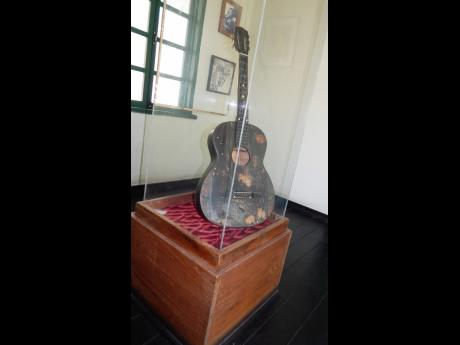For the Reckord | Henley Morgan on a mission to transform trench town (Part 2)
Arguing that the community of Trench Town has stronger international recognition than Jamaica's capital city of Kingston, and that Bob Marley's contribution to music is greater than Elvis Presley's, social entrepreneur Dr Henley Morgan recently revealed his vision for the community in a lecture at the University of Technology.
Morgan said that Trench Town, where Marley created many iconic reggae songs, could become a bigger tourist draw than Presley's Memphis, Tennessee, attraction - Graceland. That entertainment complex, including the 450-room hotel on the property, annually pulls in half-a-million tourists, and hundreds of millions of US dollars. Trench Town has hundreds of acres, compared to Graceland's 13.
A week after hearing the lecture, I joined a group of visitors to Jamaica on a Trench Town tour that Morgan was conducting. Apparently oblivious to the blazing sun, he led us through the streets at a spanking pace. Every hundred yards or so, he would greet a resident, often by name.
One of the most important stop was at Culture Yard - a former tenement yard where Marley lived and created music. Information about the yard, and the area in general, came from the Yard's official tour guide and historian, Sophia Dowe, who wore a "I love Trench Town" T-shirt.
She said that the name 'Trench' came from Daniel Trench, born to a Jamaican mother - Janet Stewart, and an Irishman who was in Jamaica on Business. The couple had 14 children, with Daniel (1813-1883) being the fourth. Daniel who was among other things, the director for the public hospital and the asylum, purchased land all across the island, including the 400 acres of Trench Town, then called Greenwich Park.
Following a destructive earthquake in 1912, Dowe said, people from all over the island, came and squatted on the land. Government eventually got the squatters off in 1939 and divided the land into "pens."
Bob Marley and his mother went to live in Trench Town in 1956. She was then friendly with Bunny Wailer's father, and they lived together on Second Street. When Bob's mother migrated to Delaware, Bob lived there with her for a few months before returning to Trench Town to live with his mentor Vincent Ford, who taught him how to play the guitar, and wrote Marley's hit, No Woman Nuh Cry.
In one room on the premises, we were shown what is said to be Marley's first guitar. Later, in the tour in a building on Collie Smith Drive, we were shown a dilapidated piano which he also supposedly use to play.
Other places of interest that Morgan proudly showed off were the Ambassador Theatre, which he called "the cradle of reggae," saying it could well become The Apollo theatre of Jamaica (a reference to the famed theatre in Harlem, New York), and a large open land called No-man's-land. Morgan claimed it was the site of the first church of National Hero Marcus Garvey.
Highlights
A major highlight of the tour were the street signs at the junction of Collie Smith Drive and First, Second, Third, and Fourth Streets. Each sign bearing historical information, and listed the music "legends" who had lived there.
First Street's legends were The Wailing Wailers, Wailing Souls and Vincent 'Tata' Ford and the statement read: "The Government Yards of Trench Town provided a unique creative environment but even more important provided a spiritual context to be shared and embraced by all cultures."
The legends of Third Street were Joe Higgs, Roy Wilson, Junior Brathwaite, Lord Tanamo, Ken Booth, Strangejah Cole and Adina Edwards.
The legends of Fourth Street included Jimmy Tucker, Junior Tucker, Desmond Tucker, Cynthia Schloss, Ernie Ranglin and Dean Frazer.
Not surprisingly, the members of the touring party were impressed by the community's history, and by the time I left them at the Jamaica Music Institute Recording Studio, I was convinced that Morgan's intention of making Trench Town the cultural hub of Jamaica could be realised.



